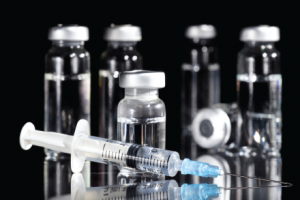
Nikolay Litov / shutterstock.com
For patients with hip osteoarthritis (OA), pain management and maintaining function are primary therapy goals. Current guidelines offer recommendations on nonpharmacologic and pharmacologic approaches to addressing these issues in hip OA.
For patients in whom pharmacologic management is considered, the use of intra-articular steroid injections is one option. In its 2012 guidelines (the most current available) the ACR gave the use of intra-articular corticosteroid injections a conditional recommendation for the initial management of OA.1 Evidence in support of that recommendation was based largely on data extrapolated from studies that looked at the use of steroid injections for knee OA.
In a study published in 2016, McCabe and colleagues conducted a literature review of the evidence for the use of intra-articular steroids for hip OA.2 Based on five studies, the investigators found that steroid injections in hip OA may be efficacious in the short term to reduce pain. However, they emphasized again that the evidence on which this outcome is based remains relatively poor and called for larger, rigorous trials to verify the true efficacy of steroid injections for hip OA.
Into this dearth of evidence on the true efficacy of steroid injections for hip OA comes a study cautioning that such injections may actually be deleterious and may spur osteonecrosis and bone collapse.
Connie Y. Chang, MD, a radiologist at Massachusetts General Hospital and assistant professor of radiology at Harvard Medical School, Boston, presented results of the study in November 2017 at the Radiological Society of North America (RSNA) Annual Meeting.3
Bone Death & Collapse
The study included three groups of patients: 102 patients with hip OA treated by steroid injections (intervention group) who underwent radiologic imaging of the hip at the time of injection; 102 patients with hip OA who underwent radiologic imaging but were not treated by steroid injections (control group); and 44 patients who underwent imaging and were treated by steroid injections in the shoulder (control group). All patients underwent a second imaging at three–nine months’ follow-up. Patients in the control groups matched the demographics of those in the intervention group, which included 62 women ranging in age from 19–92 years.

Connie Y. Chang, MD, and research team
To assess whether steroid injections for hip OA would worsen osteoarthritis, two musculoskeletal radiologists independently performed a retrospective blinded review of the radiographs taken before and after the steroid injections in the patients in the intervention group, as well as of the radiographs of the two control groups.